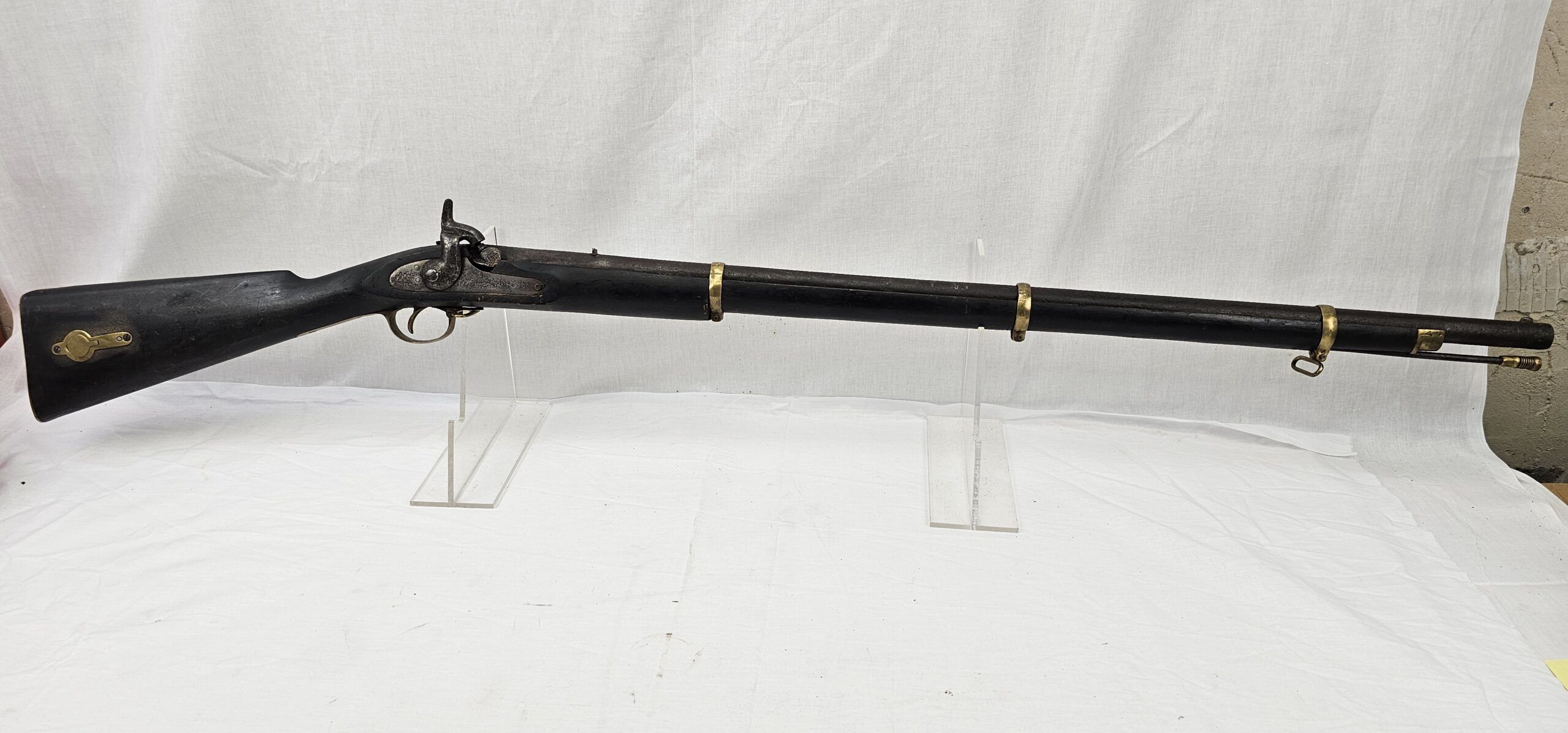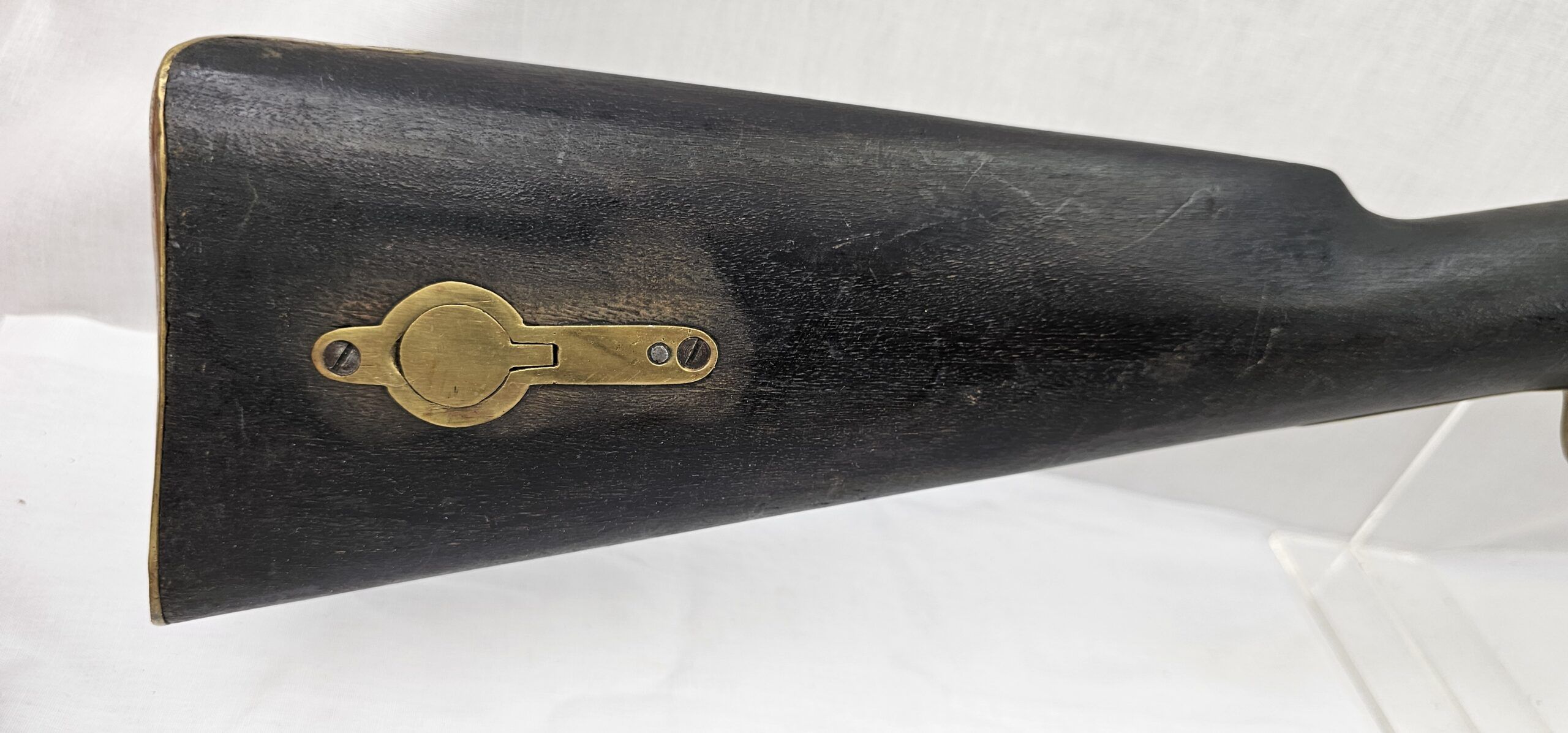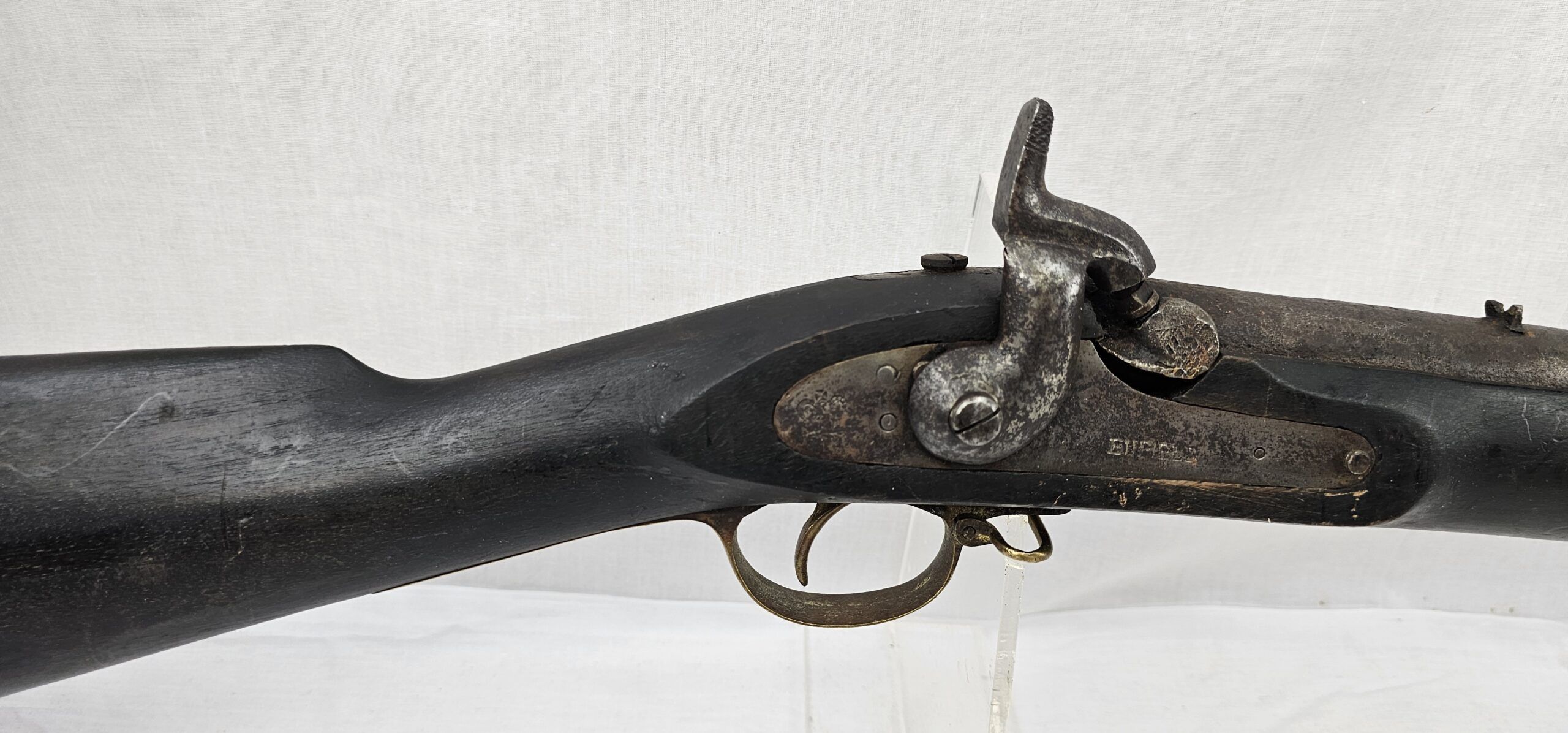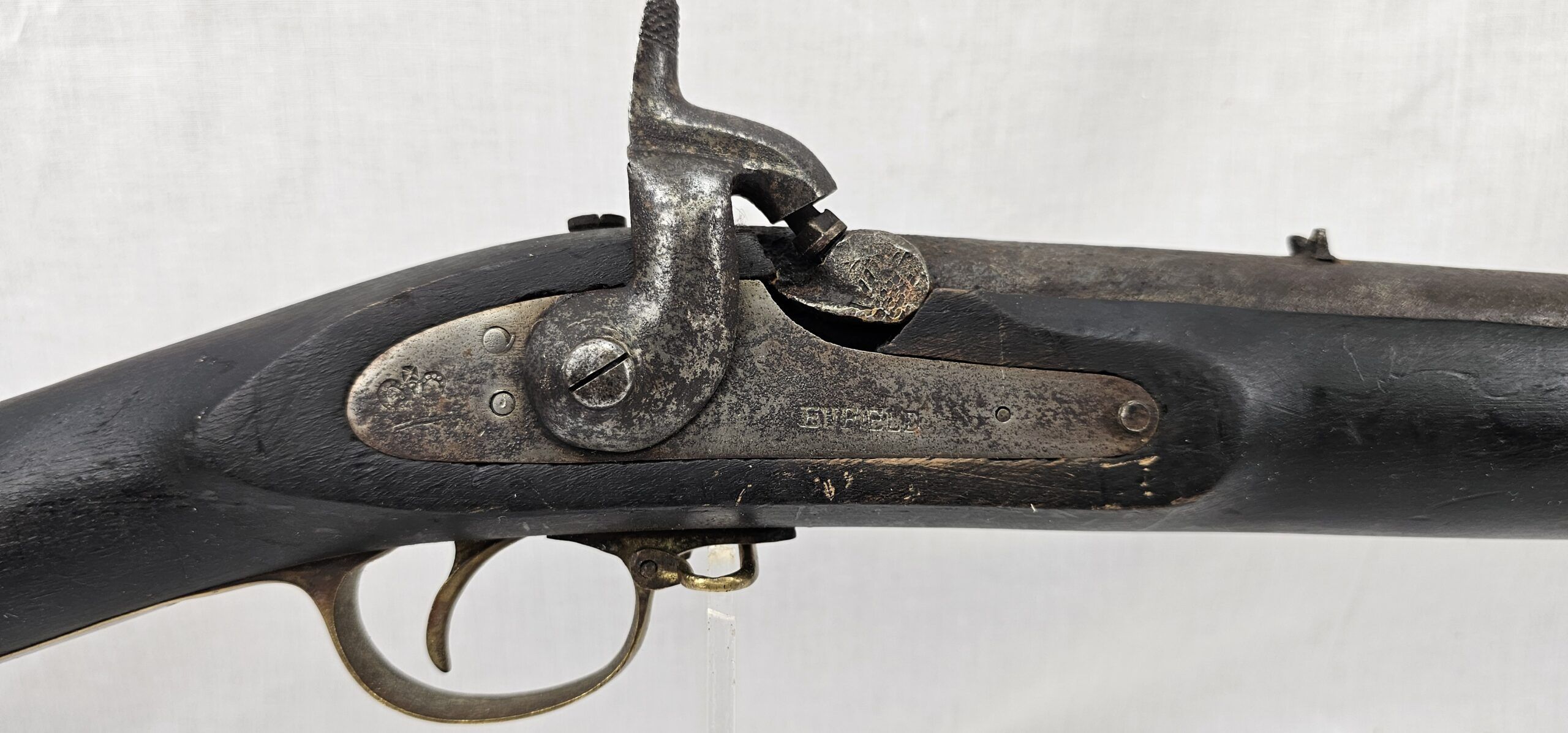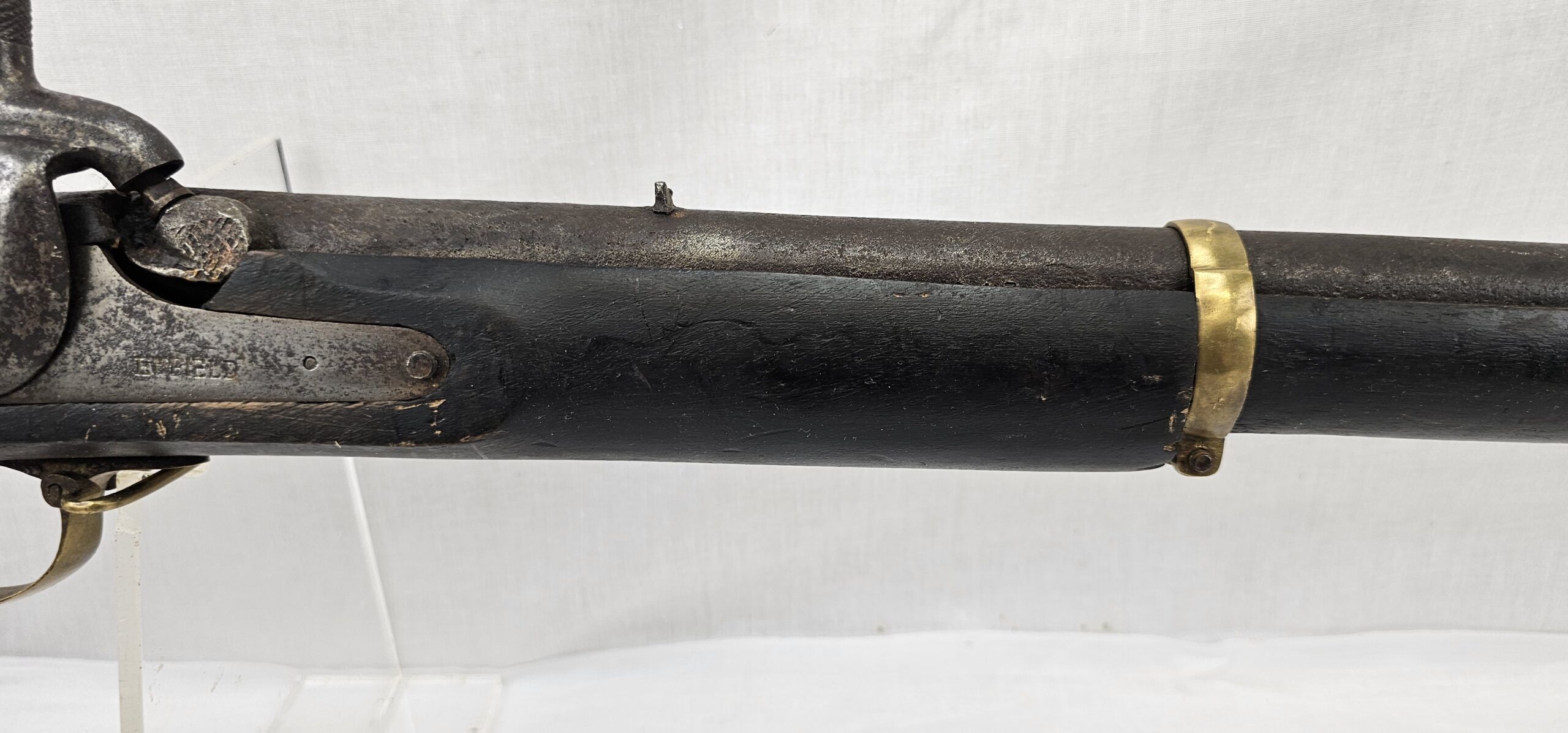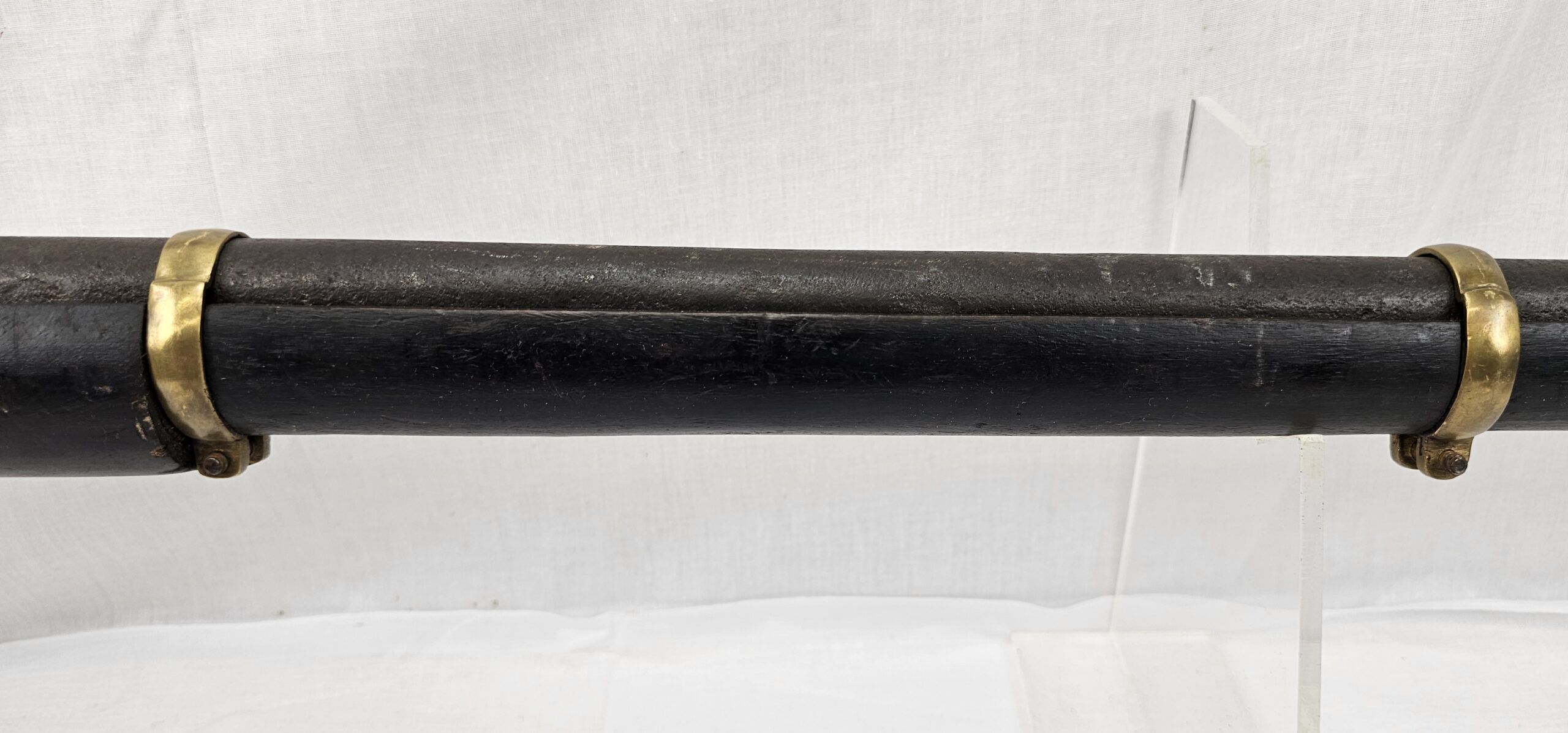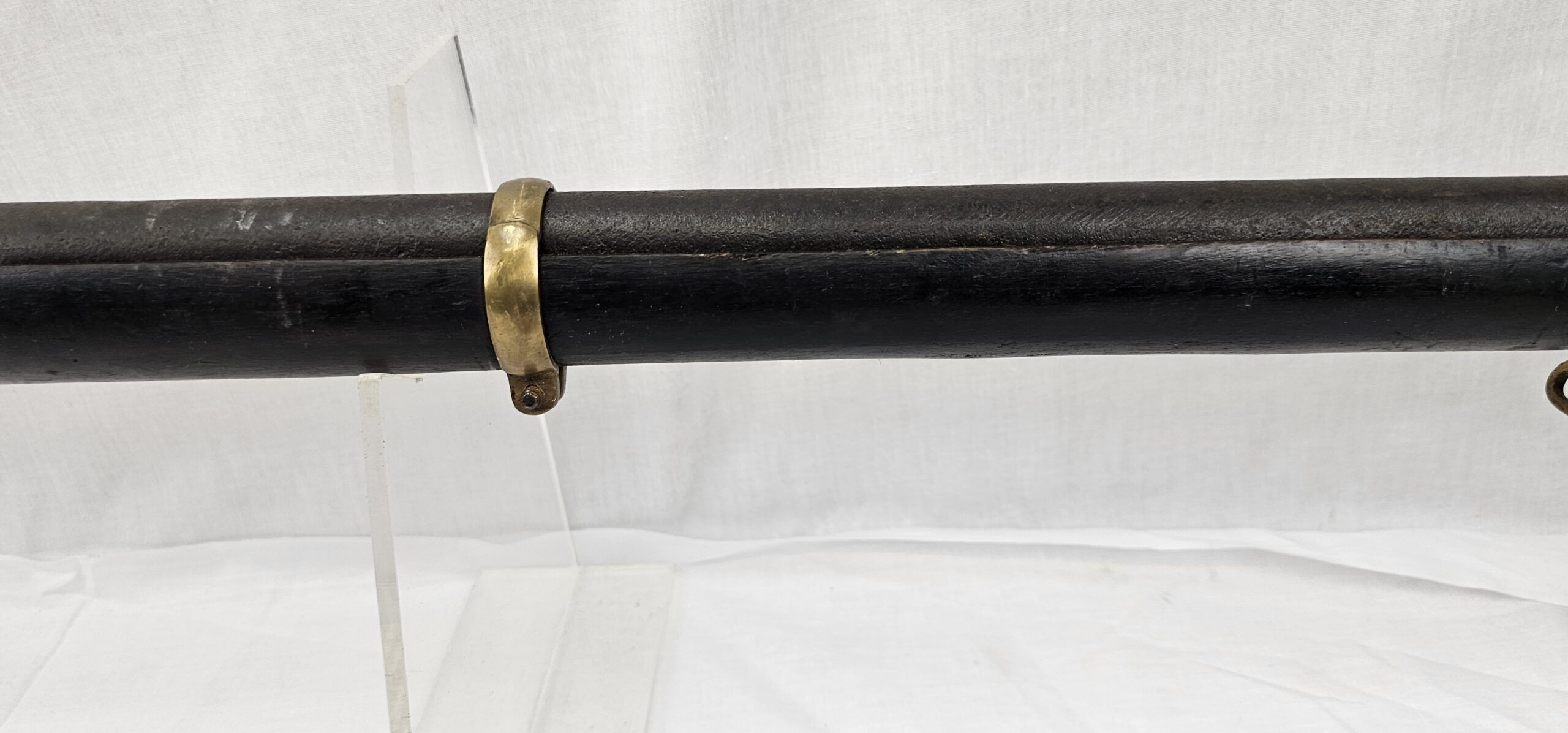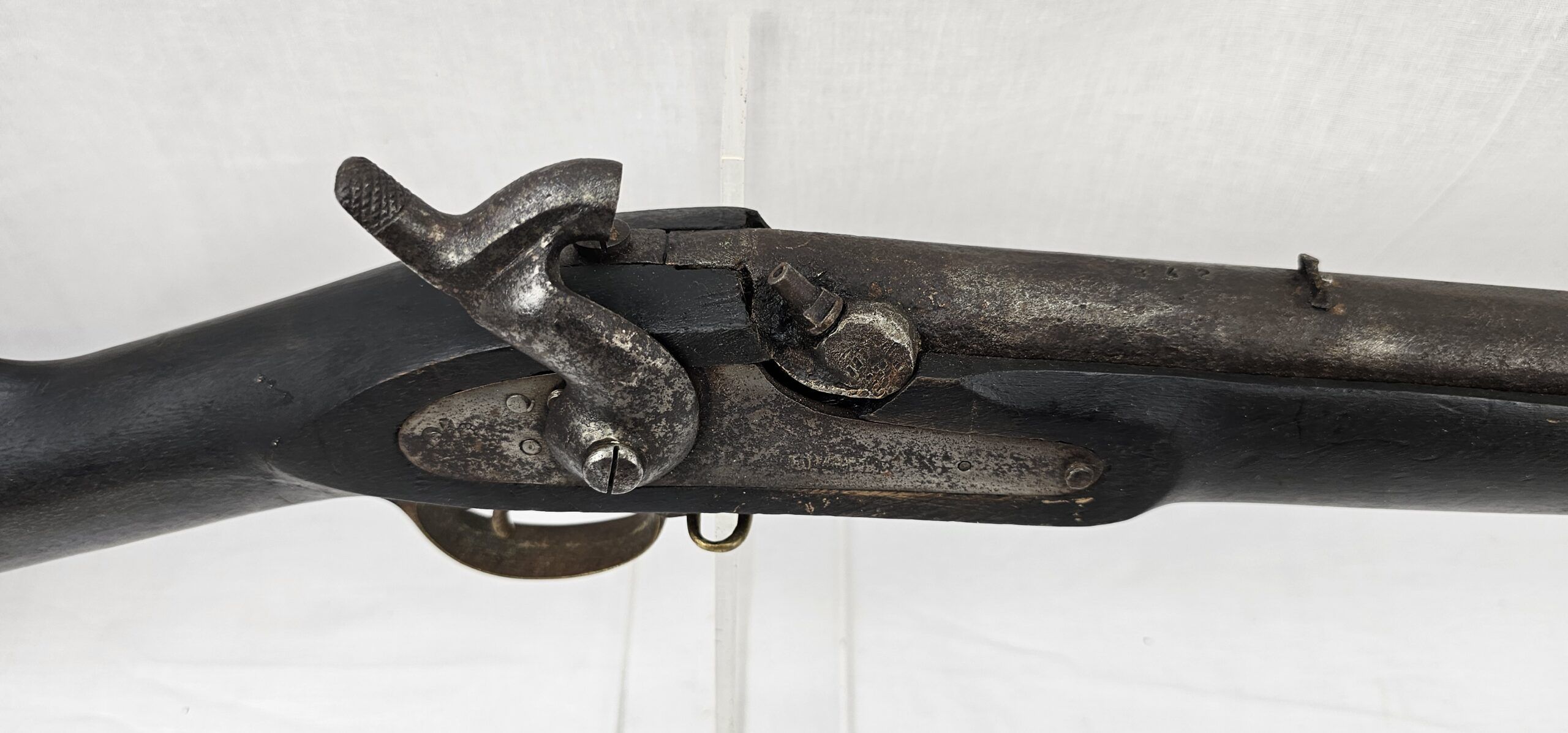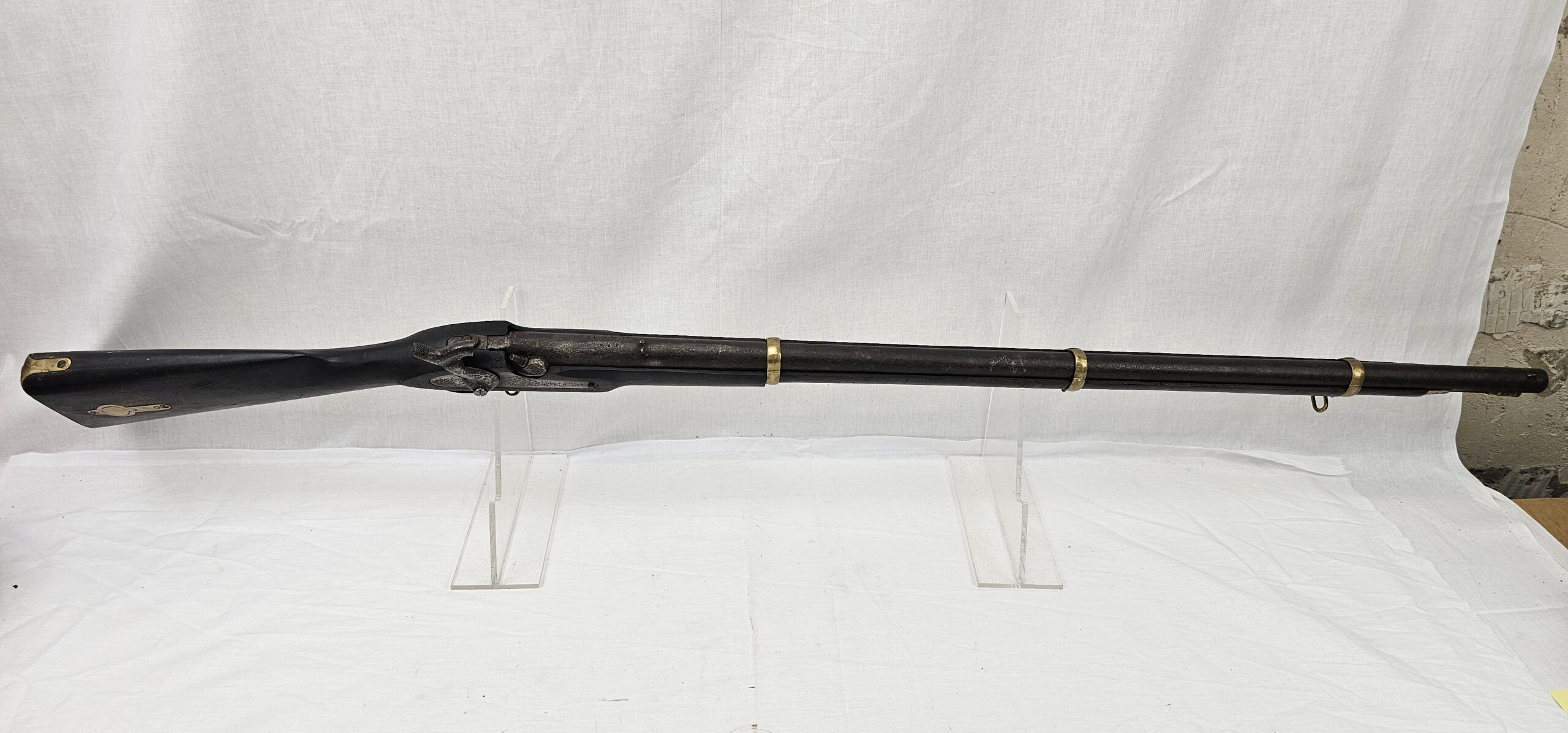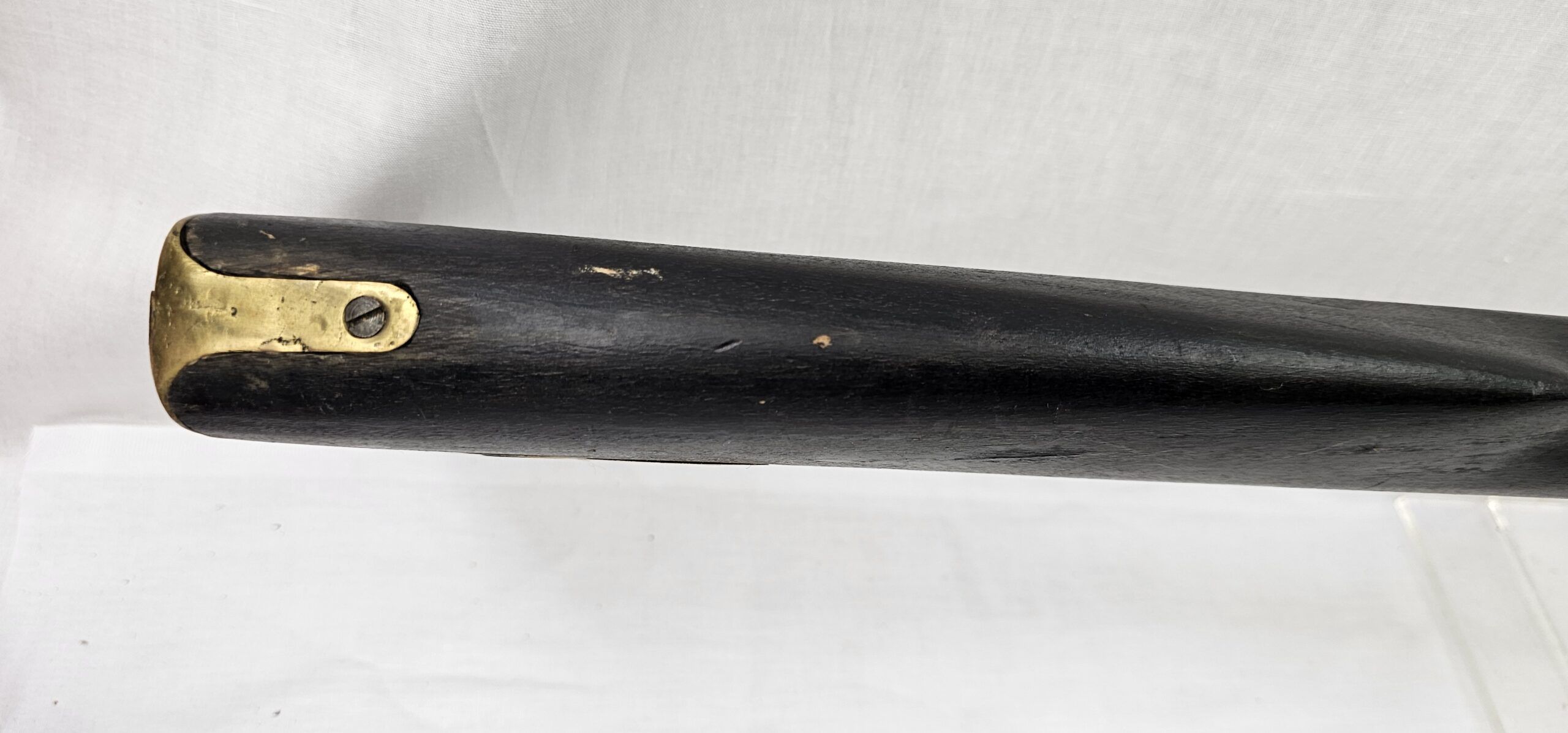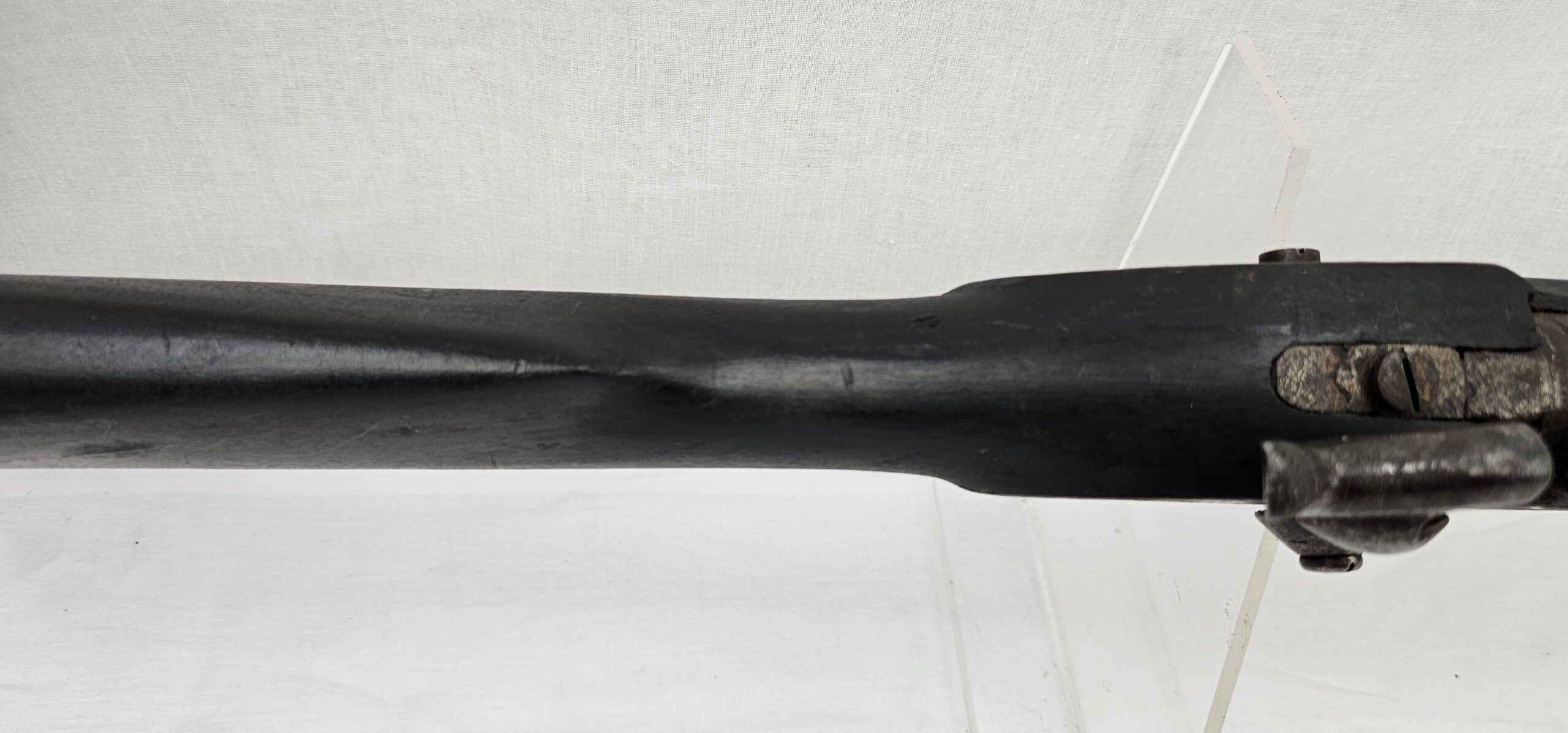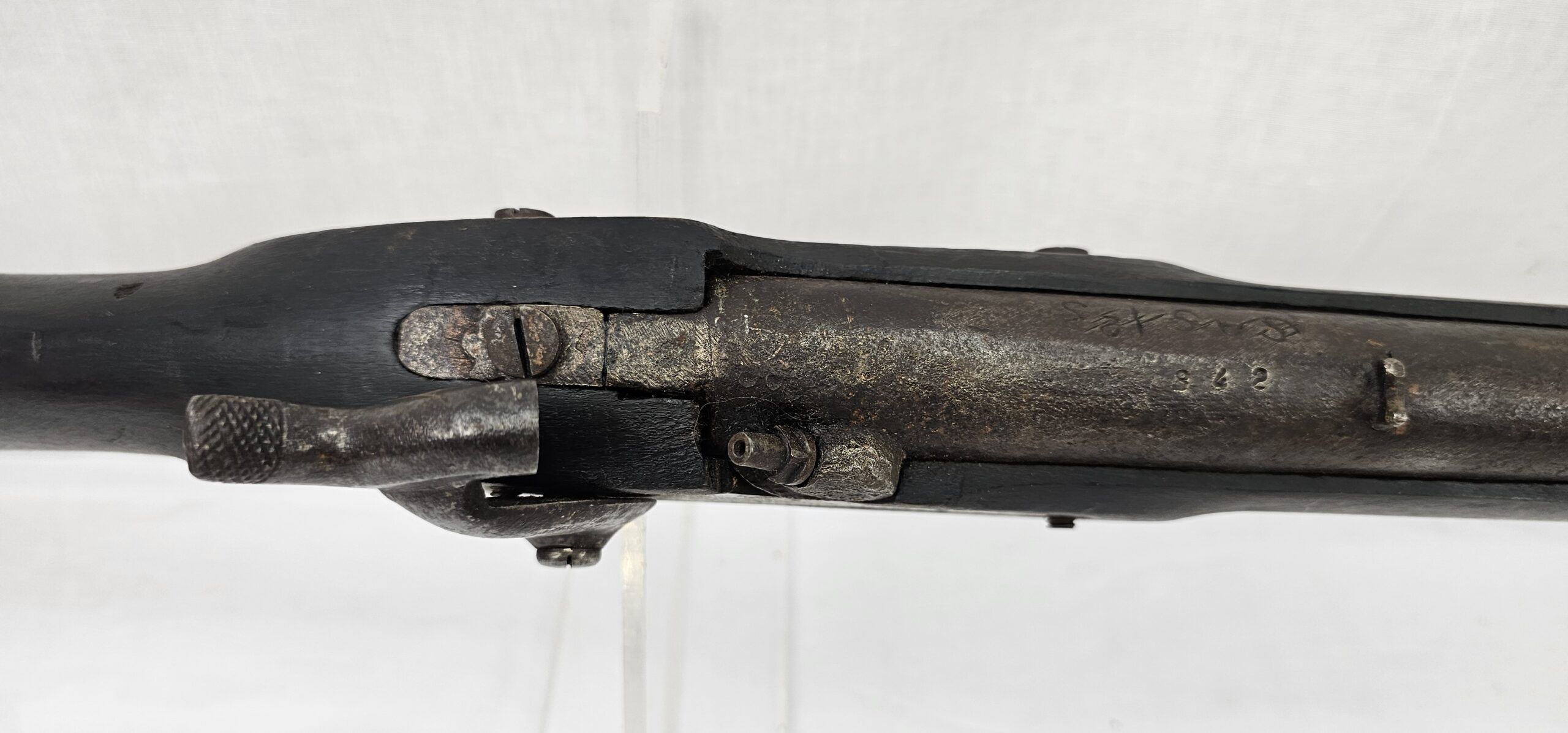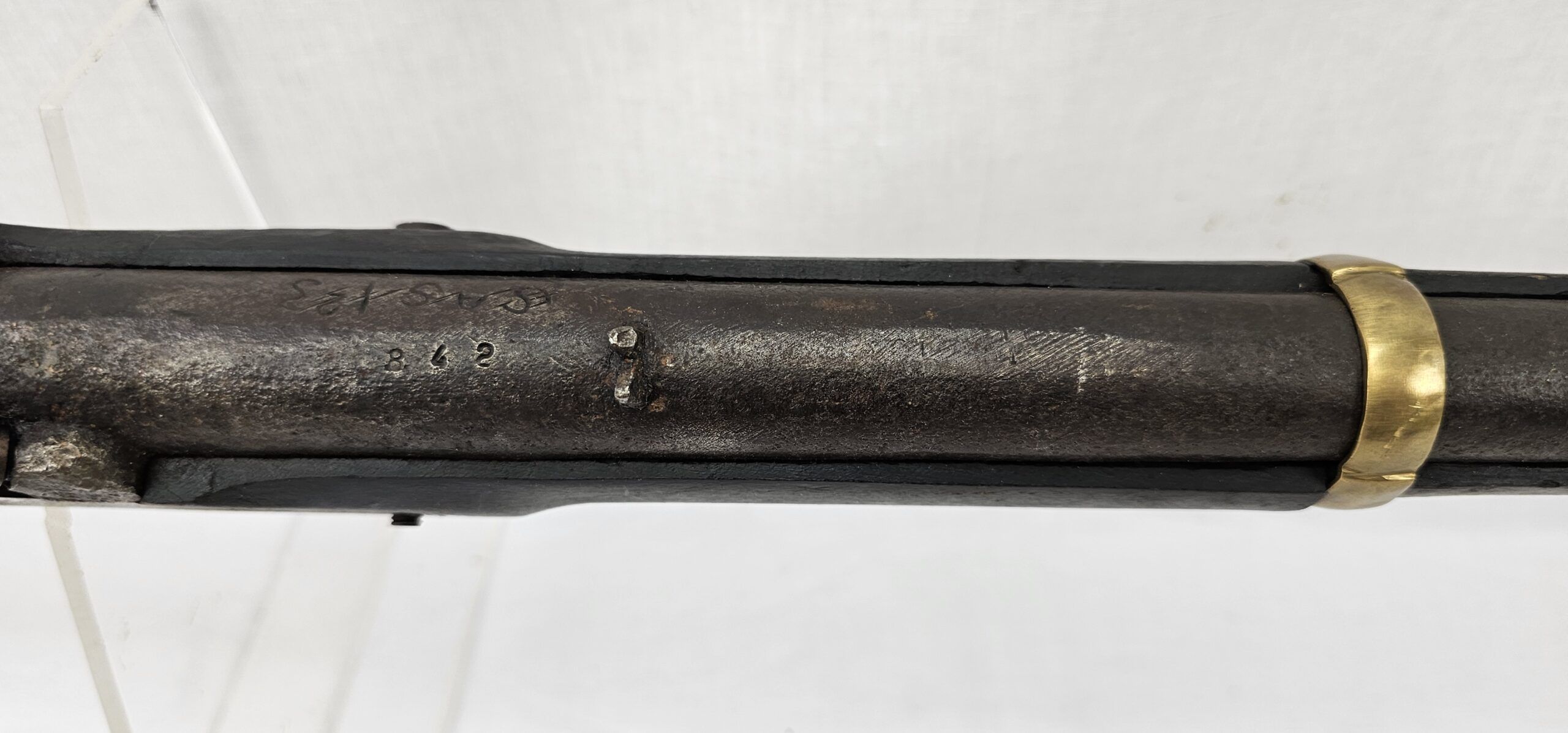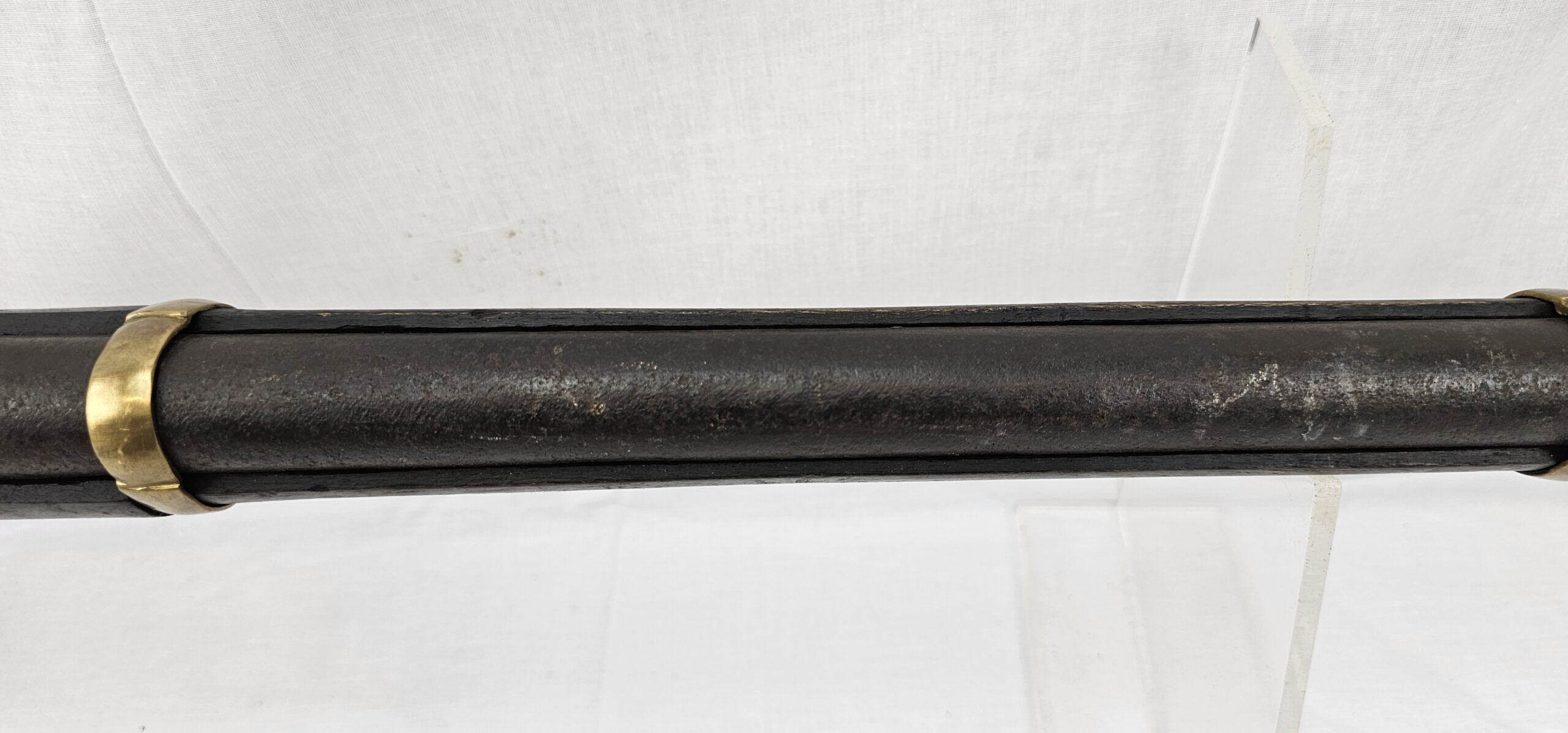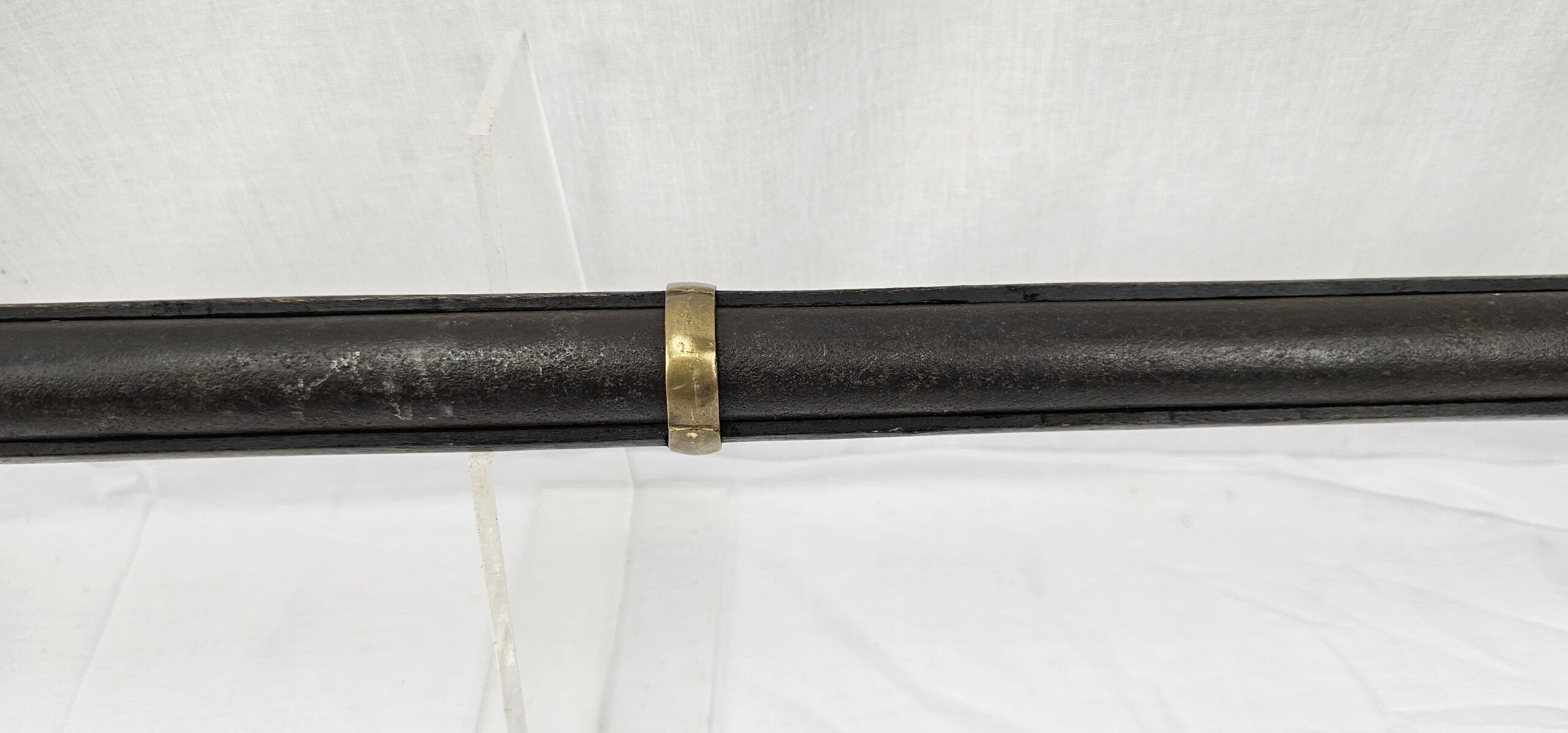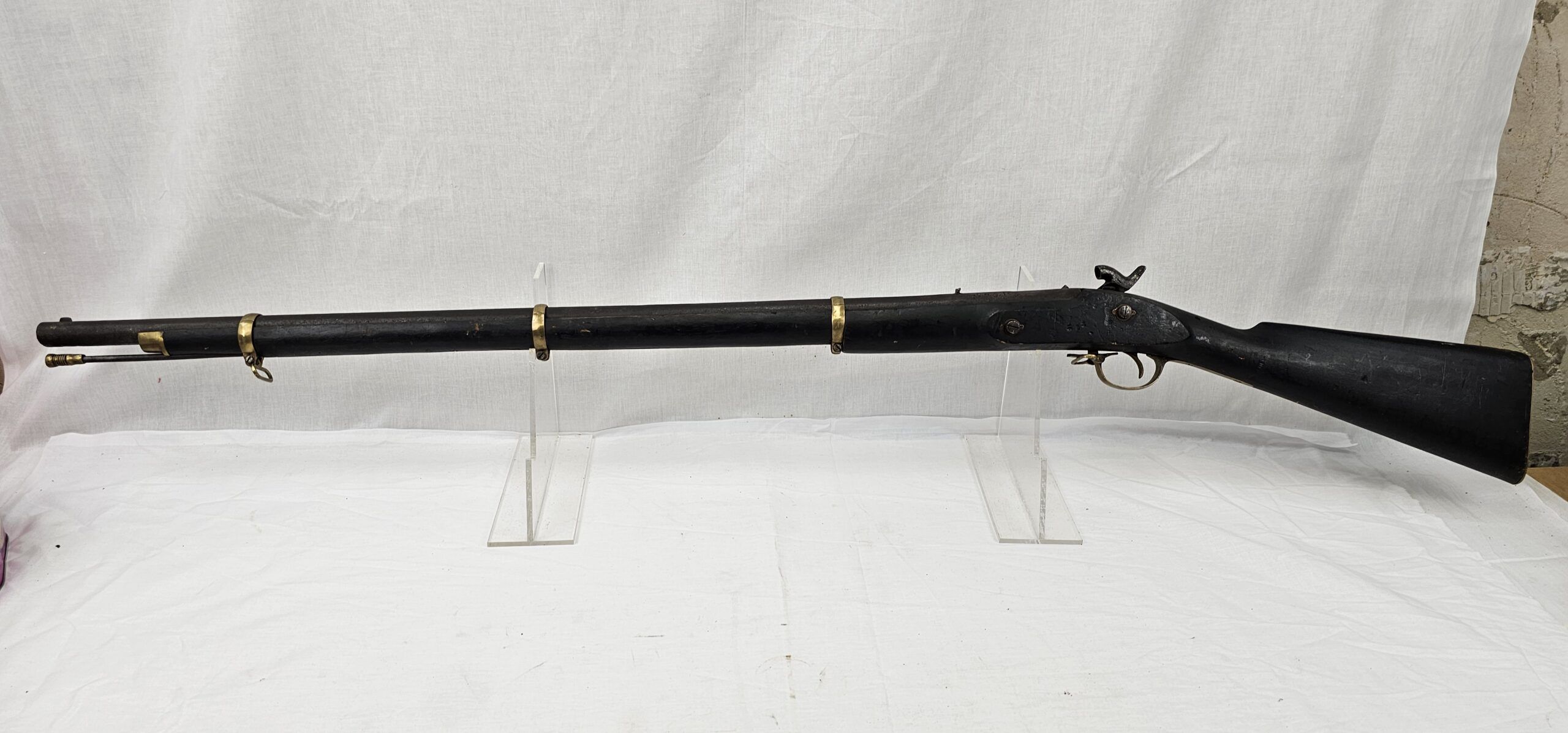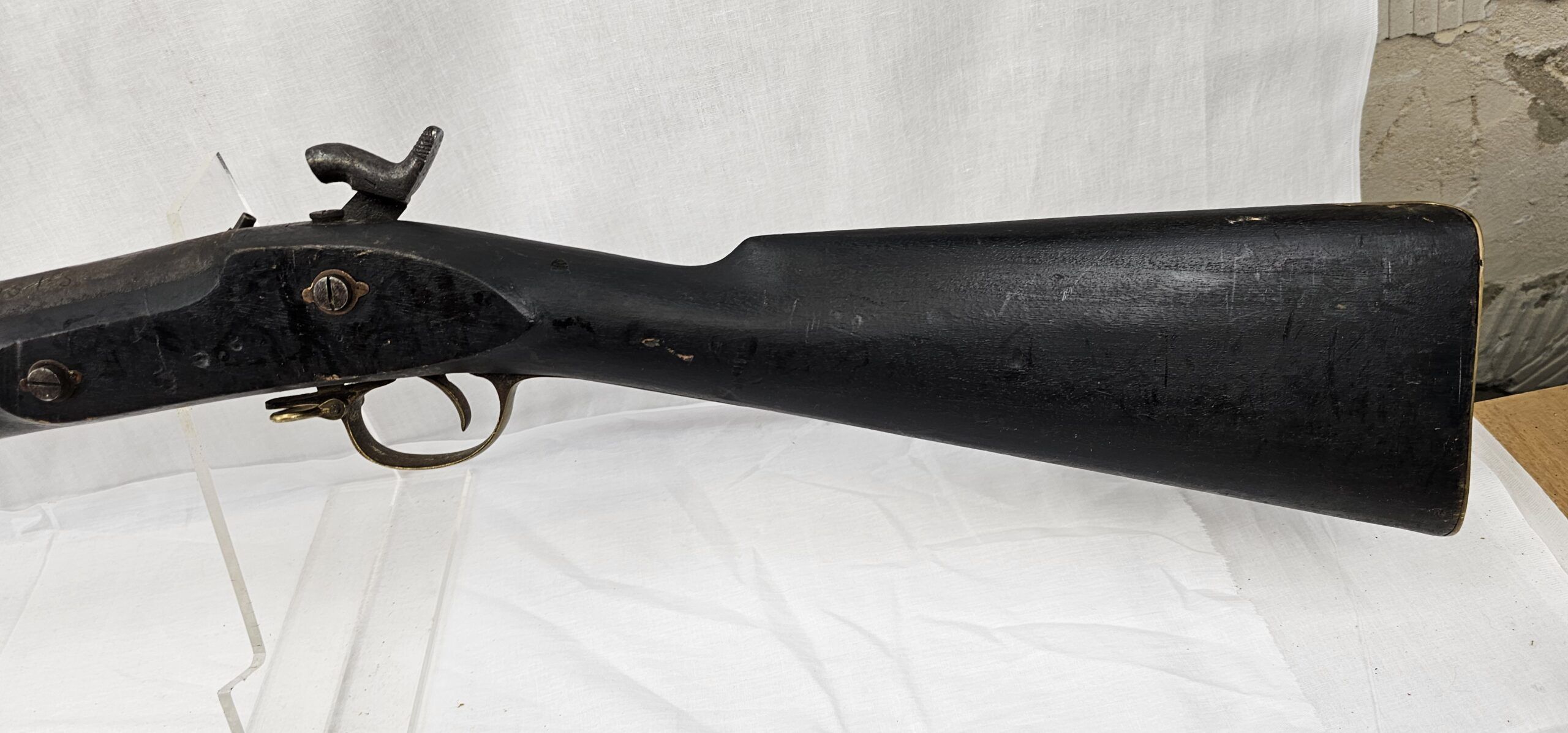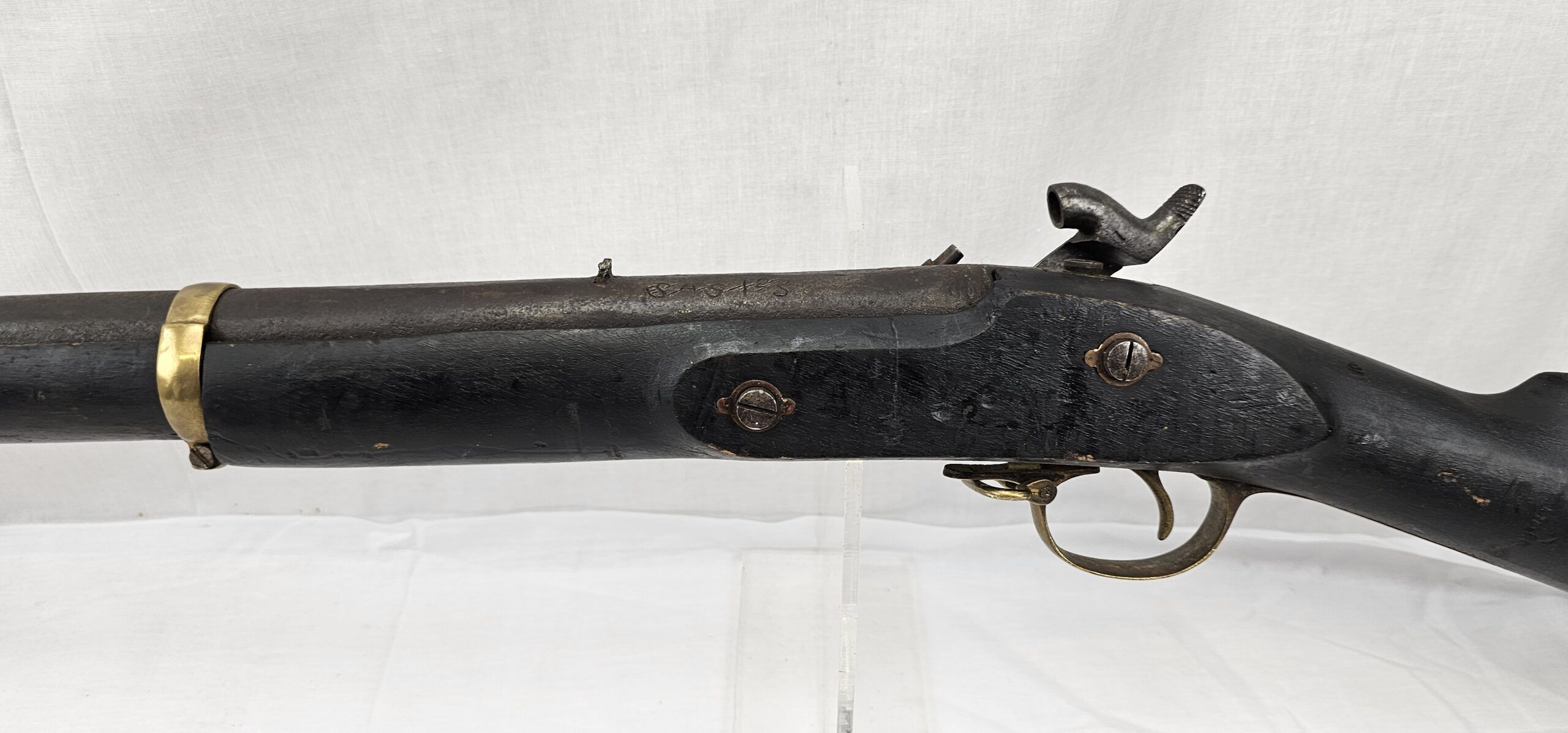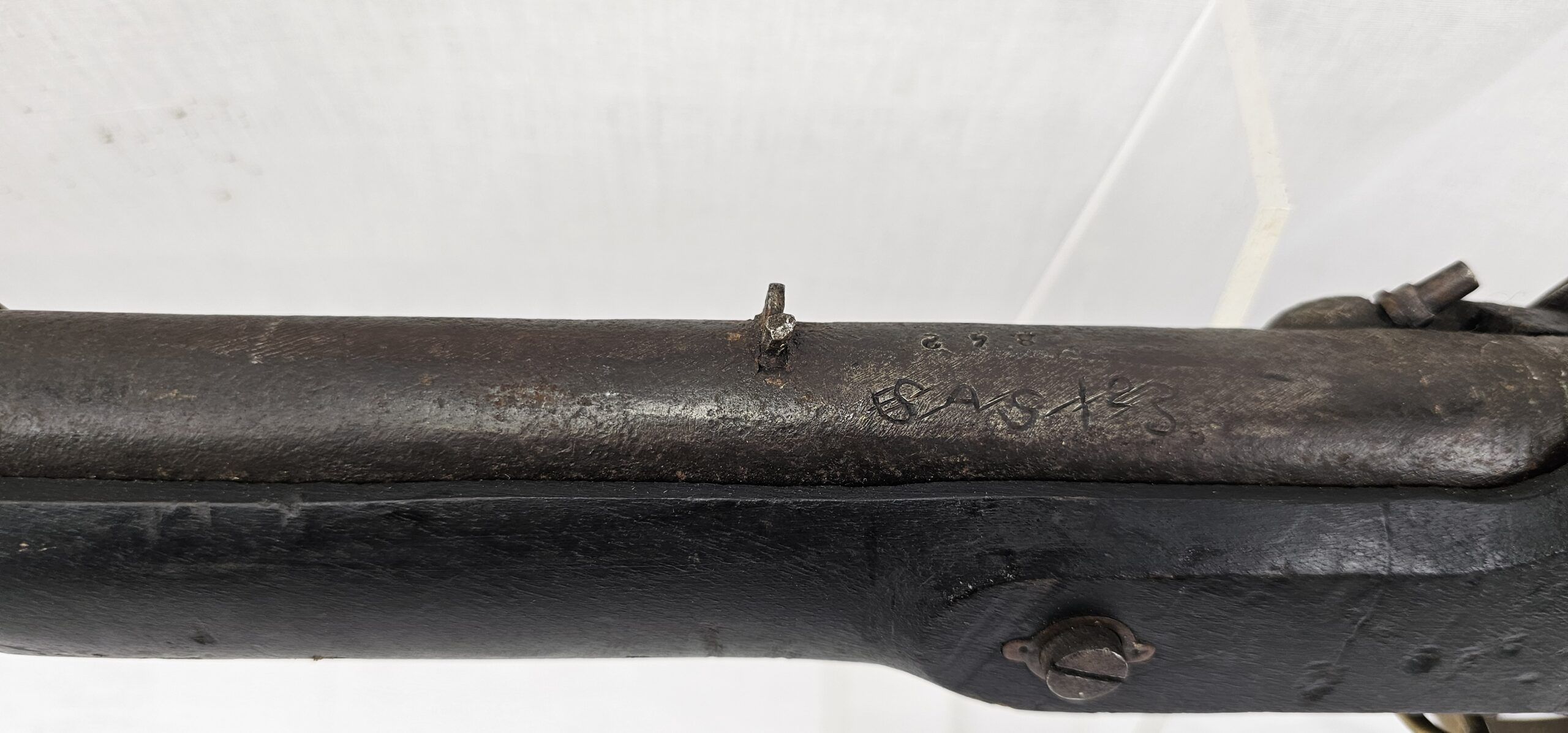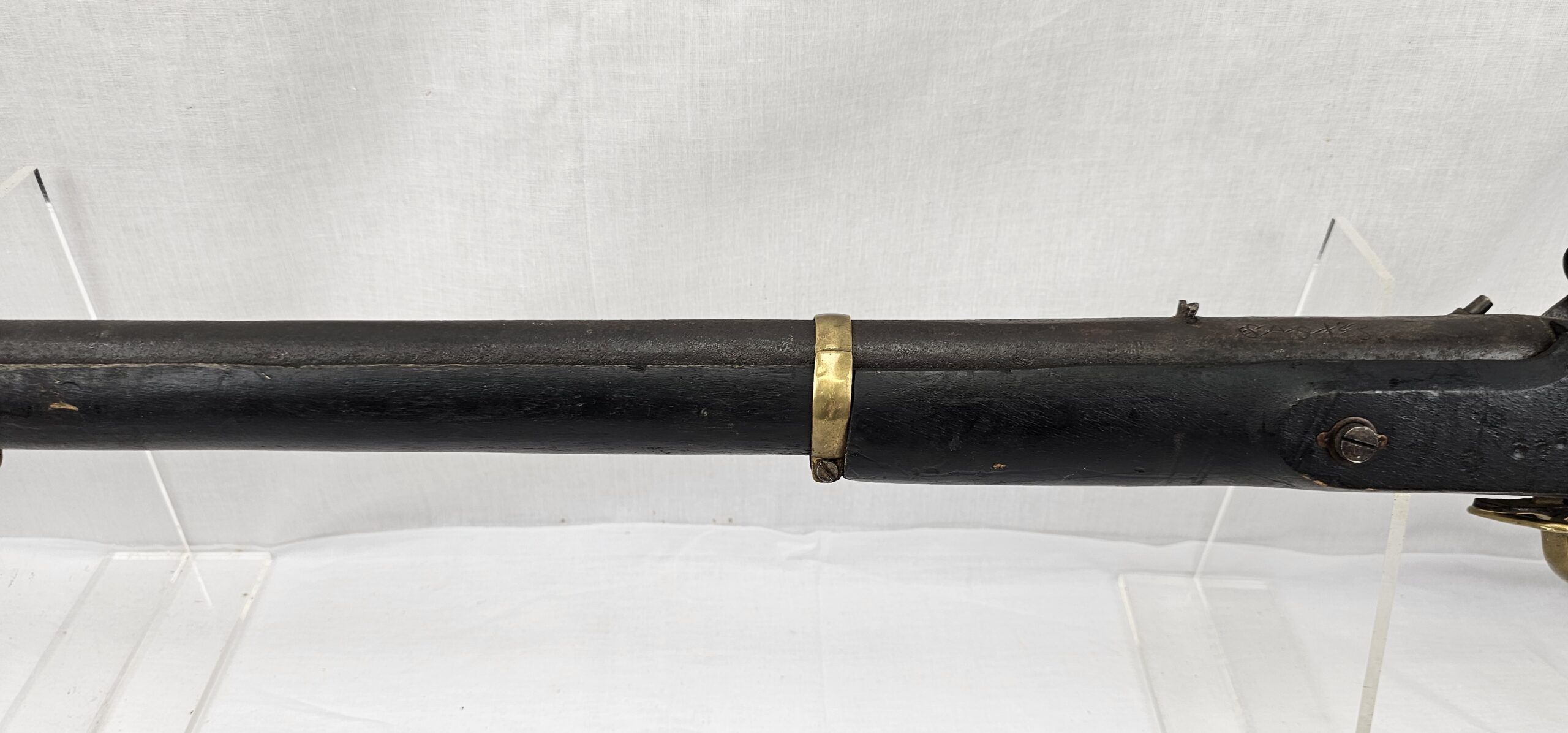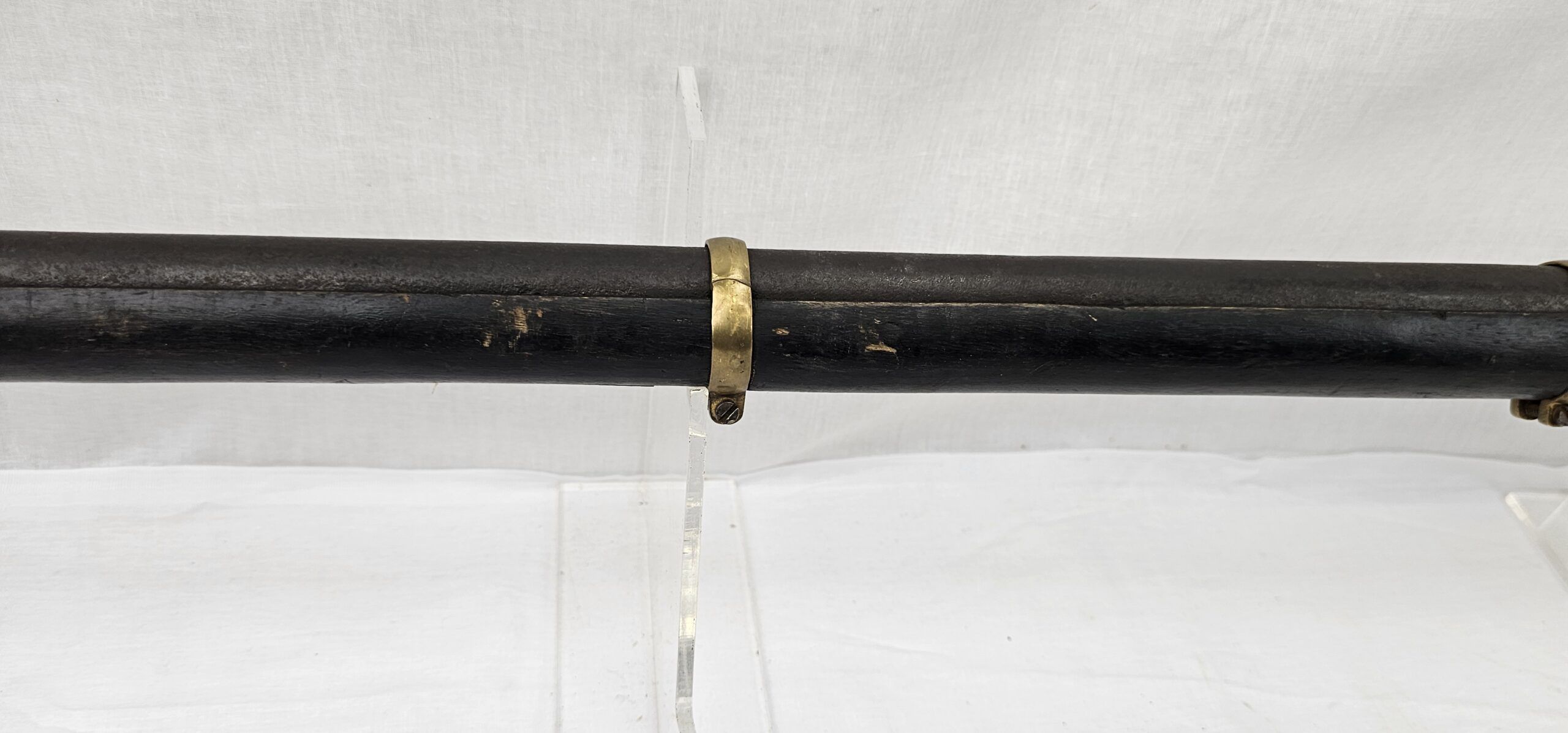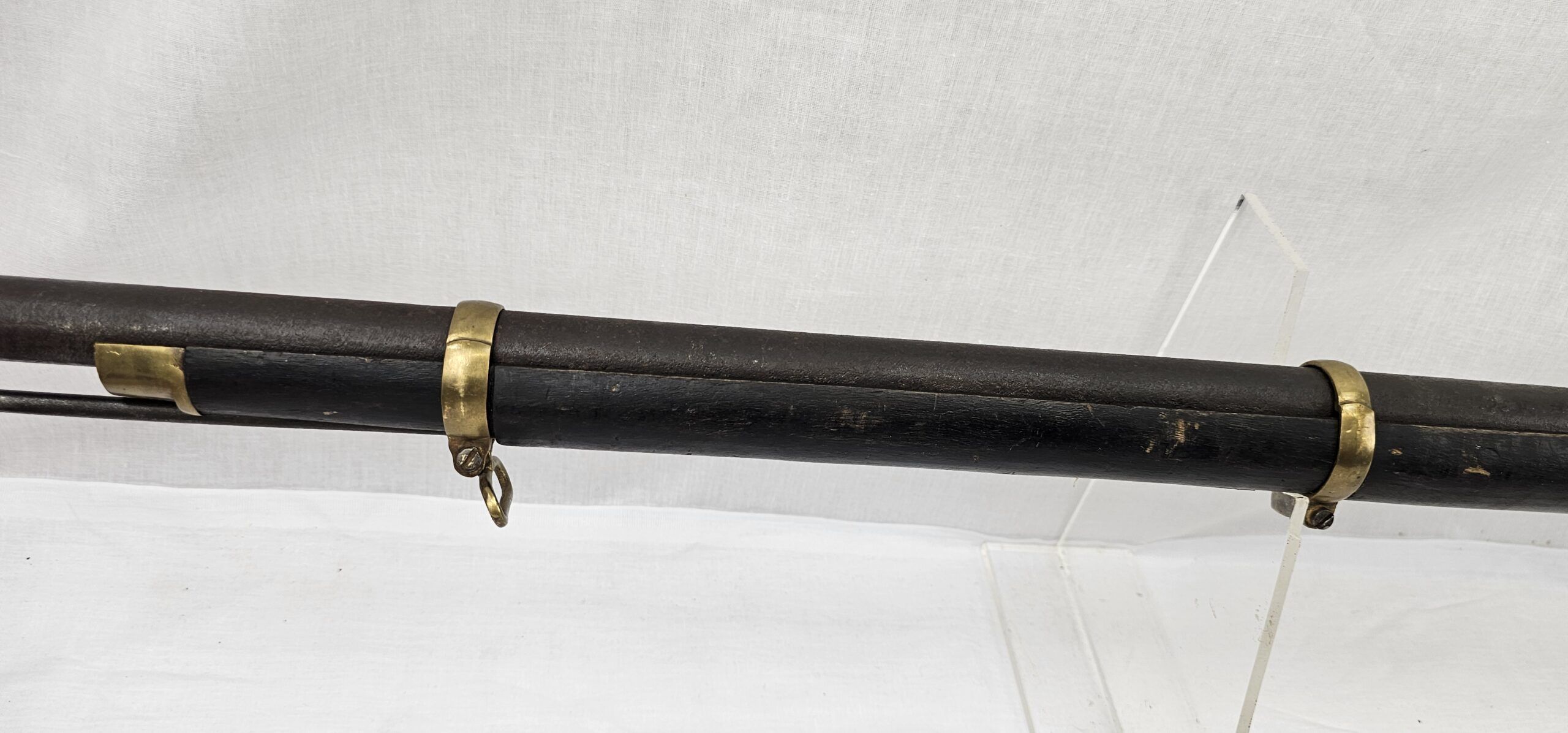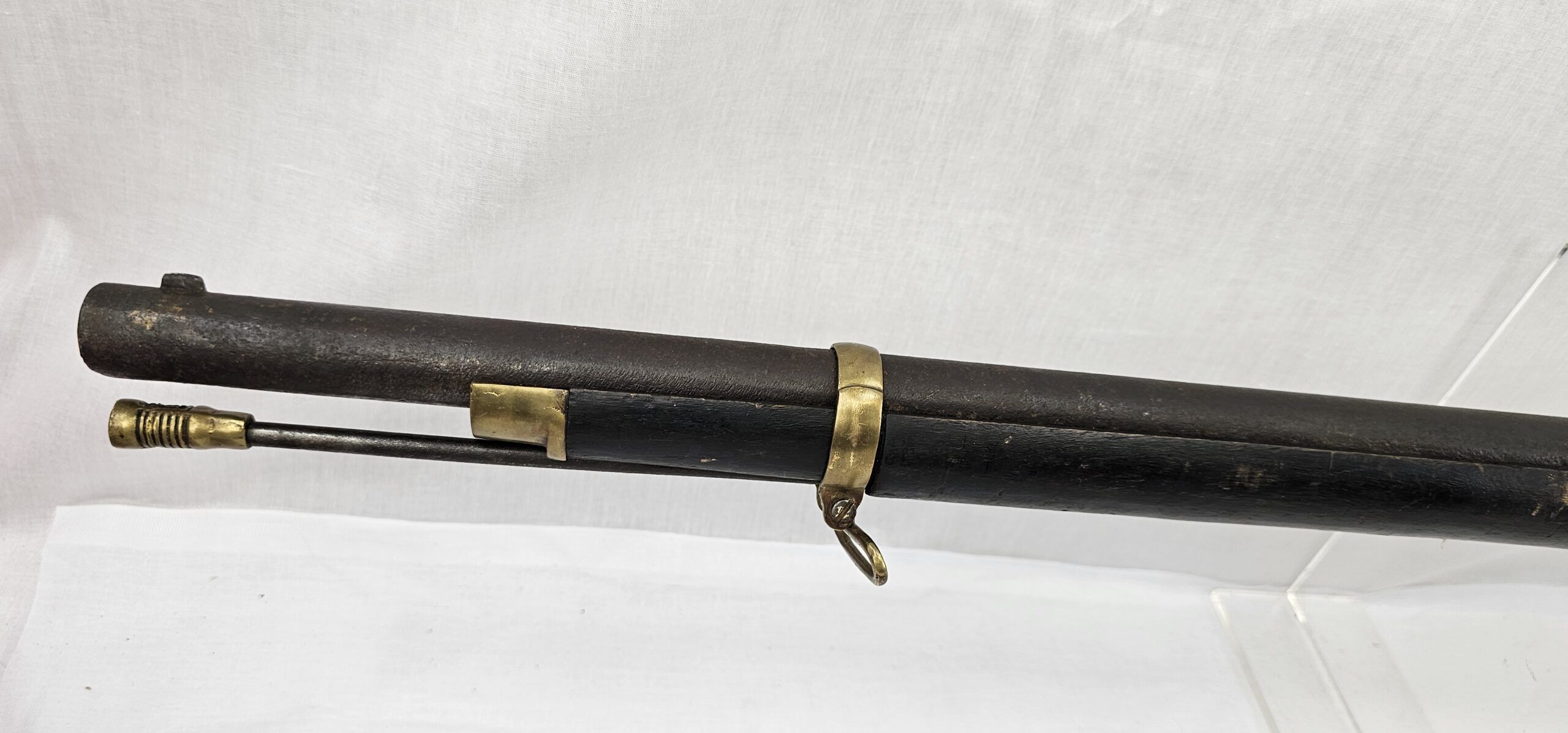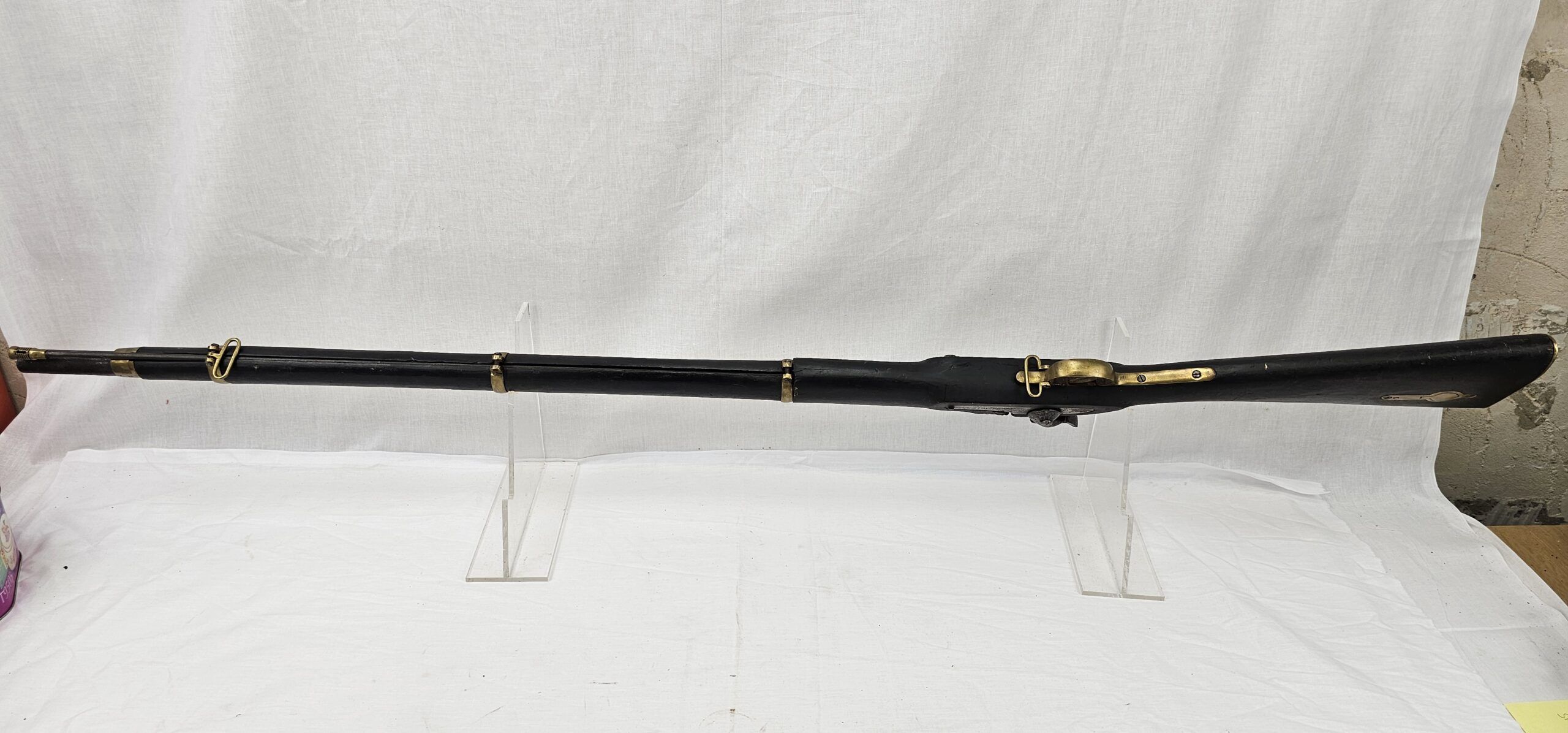~ Enfield 1853 Pattern Sepoy Musket ~
The barrel is serial numbered 842 and bears some Indian marks as well. The lockplate has been stamped Enfield and bears the crown.
The stock is fitted with a brass trapdoor for a spare ball or patches.
The hammer half cocks, cocks and releases with a strong spring.
The Enfield 1853 Pattern Sepoy Musket refers to a variant of the British Pattern 1853 Enfield Rifle-Musket that was issued to Indian soldiers, or sepoys, in the British East India Company’s army and later the British Indian Army. The Pattern 1853 Enfield was a pivotal firearm in mid-19th century military technology, representing a transition from smoothbore muskets to rifled firearms, significantly improving accuracy and range. Here’s a closer look at its history, design, and impact:
Design and Features
Rifling: The key innovation of the Pattern 1853 Enfield was its rifled barrel, which imparted a spin to the bullet, greatly enhancing accuracy and effective range compared to the smoothbore muskets that preceded it.
Caliber and Ammunition: The musket was .577 caliber, firing a Minié ball, a conical bullet that expanded upon firing to engage the rifling in the barrel. This design facilitated easier loading while maintaining the advantages of rifling.
Sights and Range: Equipped with adjustable sights, the Pattern 1853 Enfield was effective at ranges up to 500 yards, with a maximum range exceeding 1000 yards, although such long-distance shots were more speculative than precise.
Production and Use
Manufacture: Produced both in Britain and at the arsenal in Fort William, India, the Enfield 1853 Pattern was widely used throughout the British Empire.
Sepoy Issue: The version issued to the sepoys in India was essentially the same as those used by British troops, although there were reports of quality control issues with some units produced in India.
Historical Impact
Indian Rebellion of 1857: The introduction of the Enfield 1853 Pattern Sepoy Musket is closely linked with the Indian Rebellion of 1857. A key factor that fueled the rebellion was a rumor that the cartridges for the musket were greased with cow and pig fat, which was offensive to both Hindu and Muslim soldiers for religious reasons. Soldiers had to bite the cartridge to open it, which meant coming into direct contact with the grease.
Military Modernization: Despite the controversy, the Pattern 1853 Enfield represented a significant step in the modernization of military forces, setting the stage for further advancements in small arms technology.
Legacy
Enduring Influence: The Pattern 1853 Enfield Rifle-Musket and its variants, including those issued to Indian sepoys, remained in use for many decades, participating in numerous conflicts around the globe. Its design influenced the development of future rifles.
Historical Significance: Beyond its role in military history, the Pattern 1853 Enfield and the sepoy variant hold a prominent place in the history of colonial India, symbolizing both technological advancement and the complexities of colonial rule.
The Enfield 1853 Pattern Sepoy Musket is a notable artifact of military and colonial history, embodying the technological advancements of the time while also playing a pivotal role in one of the 19th century’s most significant uprisings.
Add ref no. JA#18442ABE_3751154369


